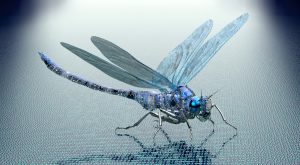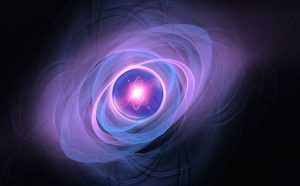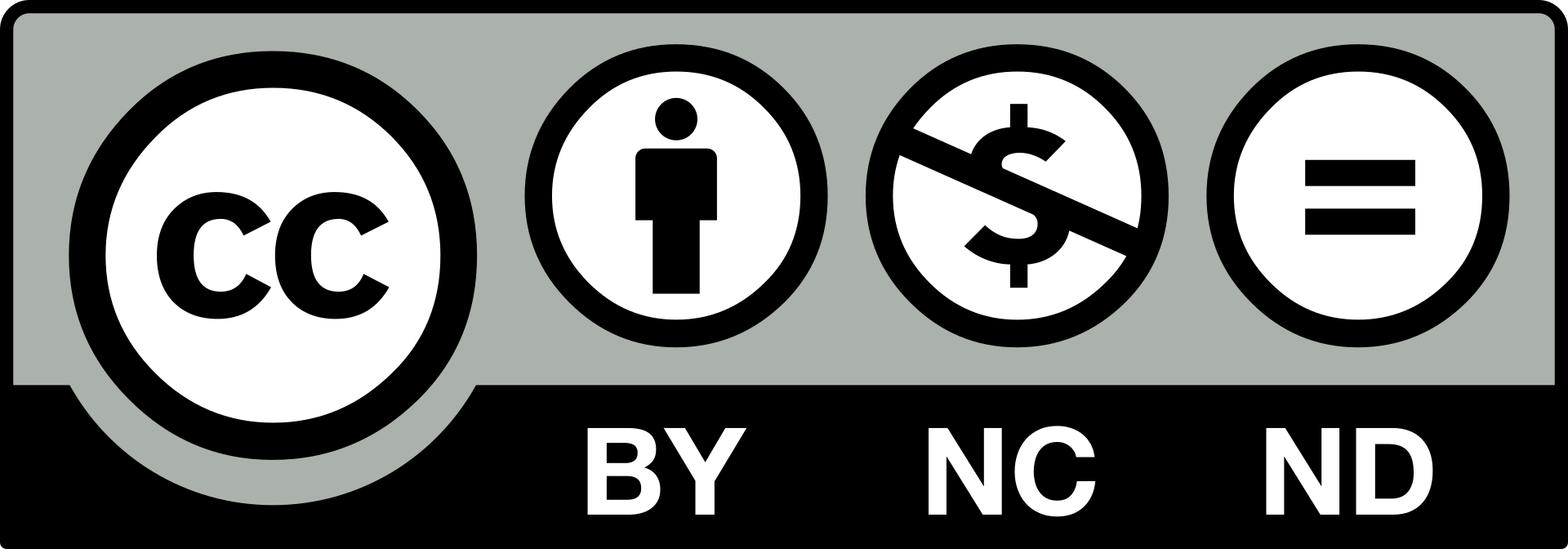- In a world where many aspects of science are still male dominated, Emily Margolis plays a key role in highlighting women’s contributions to aviation and space history.
- As Curator of American Women’s History at the National Air and Space Museum and the Smithsonian Astrophysical Observatory in the US, she runs a range of empowering projects about women in science, technology, and engineering.
- Margolis is well placed to celebrate the progress society has made in recognising women’s achievements, but she is uncompromising in challenging the barriers to gender equity that still exist.
Dr Emily A Margolis talked to Research Features about her incredible career as Curator of American Women’s History at the National Air and Space Museum and the Smithsonian Astrophysical Observatory. Using thoughtful storytelling and innovative collaboration, Margolis dismantles the walls hiding the previously uncredited female contributions to aviation and space history. What Margolis reveals is a wealth of previously overlooked – or forgotten – women pioneers in air and space.
What is your role as Curator of American Women’s History at the National Air and Space Museum and the Smithsonian Astrophysical Observatory?
Women’s history is aviation and space history. Women have been a part of every momentous achievement and mundane moment. A story without women is not the whole story. Yet historical erasure – the process by which women’s work is devalued and forgotten – makes it hard to recover these stories. That’s where I come in.

As Curator of American Women’s History, my role is to research and amplify the contributions of women to the history of aviation, spaceflight, astronomy, and planetary science. My work takes many forms, but generally falls into four categories: original research, exhibition development, collecting historic objects and records, and public programming. In any week, I might be conducting oral history interviews for my book project, writing labels for forthcoming exhibitions, corresponding with prospective object donors, and preparing a virtual lecture for undergraduate students.
Central to my curatorial practice is the belief that how we tell stories matters as much as which stories we tell. I spend a lot of time thinking about how gender bias manifests in language, and how storytellers can avoid perpetuating these harmful ideas. I have been developing resources that empower others to tell women’s stories accurately and without bias – because everyone shares in this responsibility.
Margolis dismantles the walls hiding the previously uncredited female contributions to aviation and space history.
Collaboration is fundamental to my work. I am always learning from colleagues across the Smithsonian who are championing women’s history in innovative ways. I find inspiration and motivation through participating in the vibrant intellectual community of the Smithsonian American Women’s History Initiative (AWHI). This pan-institutional initiative, which funds my position, is working to make ‘the role of women in American history to be well-known, accurate, acknowledged, and empowering.’

What collections are you currently working on?
I recently had the honour of bringing spacesuit technician Sharon Caples McDougle’s tools and memorabilia into the National Collection. In addition to assisting astronauts don and doff spacesuits for training exercises and space shuttle missions, McDougle also fitted and maintained the suits. She supported more than 20 space shuttle crews between 1990 and 2004 and received numerous awards recognising her life-sustaining work, including the Silver Snoopy Award, one of NASA’s most prestigious honours. McDougle is a trailblazer in her own right as the first Black woman spacesuit technician, crew chief, and manager of the Space Shuttle Crew Escape Equipment Processing department.
McDougle’s donation enables the Museum to tell the story of her remarkable career, as well as the work of all spacesuit technicians. Frequently photographed alongside astronauts, they are often hidden in plain sight. Highlighting their work helps us create a fuller picture of the history of spaceflight.
What are the common barriers to careers in science that women have faced? Do any of these barriers still exist?
Gone are the days of sexist admissions policies excluding women from pursuing higher education. Caltech, for example, finally began admitting undergraduate women in 1970. Sexist application of anti-nepotism rules, which often forced women in scientific partnerships to work as unpaid volunteers, are thankfully a thing of the recent past, too.

Although women have greater access to science education and careers than before, many find that scientific workplaces remain unwelcoming. For example, women are more likely to experience uncredentialing and untitling, as well as the devaluing and uncrediting of their work. They are more frequently tasked with non-promotable work, which impacts productivity, advancement, and prestige. The gender pay gap is well known, and the COVID-19 pandemic exacerbated existing challenges for scientists with child and eldercare responsibilities. Women disproportionately experience the trauma of sexual and gender harassment in scientific workplaces. These forms of gender oppression and discrimination exist alongside the oppression of other identity categories.
Women, gender minorities, and their allies have long worked to advance gender equity in the sciences. Archives are filled with surveys, reports, and conference proceedings that document unequal treatment and, importantly, offer correctives. And yet, the same conversations seem to play out decade after decade. My reading of the primary source material is that without committed leadership and mechanisms for accountability, research alone cannot catalyse change.
Has there been a shift in perception about women’s previously overlooked contributions to the history of spaceflight?
Yes! Historian Margot Lee Shetterly deserves a lot of the credit for shifting the public’s perceptions of women’s contributions to spaceflight. In her 2016 book Hidden Figures: The American Dream and the Untold Story of the Black Women Mathematicians Who Helped Win the Space Race, Shetterly introduced the world to Katherine Johnson, Dorothy Vaughan, Mary W Jackson, Christine M Darden, and other Black women who worked in technical roles at NASA’s Langley Research Center. The film adaptation of her book popularised their stories, along with the idea that women have been essential members of the aerospace workforce from the beginning.

The concept of ‘hidden figures’ has sparked the public’s curiosity. People often ask me about lesser-known stories of women in spaceflight. Many want to know why these stories have not been told before. I never miss this opportunity to talk about historical erasure. To understand this process, we need to look at what kinds of labour – and therefore which labourers – were valued in their time. And we need to look at which people had access to highly valued and visible jobs, and how biases around gender, race, class, ability, and other identity categories manifested in career pathways.
As we remember the past, it’s important to reflect on the present. I always encourage people to think about how erasure is happening in their own workplaces and communities – and what they can do to interrupt this process.

Please could you describe three women who have made outstanding contributions to science in space?
It’s impossible to choose! Here are three women whose stories should be better known. Aviator and astronaut Wally Funk (b. 1939) most recently made headlines in July 2021 when she achieved her long-awaited dream of spaceflight on Blue Origin’s first crewed New Shepard mission. Funk first sought to become an astronaut in the early 1960s, when she volunteered to participate in an unofficial astronaut testing programme for women. Although NASA ultimately ended the programme, Funk and the other First Lady Astronaut Trainees proved that women were physically and psychologically fit for spaceflight. Funk went on to a long career as a flight instructor and flight safety professional.

Engineer Mary Golda Ross (1908–2008) worked on some of the most important aerospace technologies during her 30+ year career at the company Lockheed, now known as Lockheed Martin, including the Agena launch vehicle. The first known Native American woman engineer, Ross credited her Cherokee education and values for setting her up for success. She was a lifelong advocate for women and Native People in engineering. Ross was an active member of the Society of Women Engineers, serving on the national board and sponsoring scholarships, as well as the American Indian Science and Engineering Society.

Anousheh Ansari (b. 1966) is an Iranian-American engineer, entrepreneur, and astronaut who is working to advance commercial spaceflight. In 2004, she and her family sponsored the Ansari X-Prize, which was awarded to the first non-governmental organisation to launch a reusable crewed vehicle into space twice in two weeks. This prize helped catalyse investment in the private spaceflight industry. Soon after, Ansari became the first woman to self-fund a trip to space. In 2006, she spent nine days on the International Space Station as a private spaceflight participant.

How do you think other organisations should recognise women’s current and historical achievements in space?
I believe that everyone shares the responsibility of amplifying women’s achievements in space. This will look different depending on your organisation. In industry and academia, for example, this means ensuring women have an opportunity to share their work through publications, presentations, and other high-visibility activities. Prizes and awards are important tools for recognising achievement – nominate a colleague! And, of course, it is essential to create opportunities for women to preserve their papers in archives and libraries.
Although women have greater access to science education and careers than before, many find that scientific workplaces remain unwelcoming.
For museums and other public history organisations, it all starts with collection. Collect objects, photographs, and archival records that document women’s contributions to space. Then use these records early and often in historical research, display them in exhibitions, and interpret them in public programmes.

In 2021, the National Air and Space Museum established an annual public programme celebrating women and gender minorities in science, technology, engineering, and mathematics (STEM). Named in honour of physicist, astronaut, educator, and advocate Dr Sally K Ride, the first American woman in space, Sally’s Night aims to amplify and inspire. In 2022, that included in-person, hands-on activities during a Major League Baseball game, as well as a social media campaign. The activities have been co-developed by the National Air and Space Museum and Smithsonian Astrophysical Observatory. For the 40th anniversary of Ride’s first spaceflight this June, museums and cultural organisations across the US will join the National Air and Space Museum by hosting their own Sally’s Night celebrations.
What advancements in women’s history are you excited about?
It is an exciting time to work in women’s history, especially at the Smithsonian. I’m consistently inspired by the work of my colleagues in the American Women’s History Initiative (AWHI). Curators are developing exhibitions on subjects like women and music of social change, researching and producing video series about women changemakers, and writing about fashion and power in Hip-Hop. The AWHI Open Knowledge Coordinator and Wikimedian-in-Residence are using Smithsonian collections to close the gender gap online through Wikipedia edit-a-thons. An interdisciplinary team is working with the US Mint on the American Women Quarters programme. And colleagues at the Harvard-Smithsonian Center for Astrophysics are working to preserve, digitise, and transcribe notebooks and plates used by the Women Astronomical Computers. This work builds on and complements the efforts of museums and cultural institutions around the world to amplify women’s contributions to history.
I co-authored a book titled Our Future in Space: Imagining Moon Bases, Missions to Mars, and More which will be published by Capstone in 2024. Intended for readers in grades 5–8, the book is inspired by themes and artefacts from a forthcoming exhibition I am curating, called Futures in Space. The exhibition and book emphasise that while the future of spaceflight is unknown, it will be shaped by the priorities of people past and present. It highlights women’s contributions to spaceflight and acknowledges their delayed entry to the astronaut corps.











